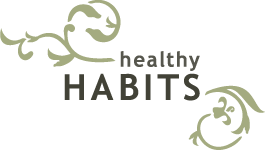unctions. However, if a diet is dominate in one fat and deficient in the other, the dominate fat’s metabolic activities will get all the attention. Herein lies the problem with the current imbalanced intakes of Omega-6 and Omega-3 fats. Our bodies are getting all the Omega-6 pro-inflammatory responses loud and clear, but, because our intake of Omega-3 from fatty fish and flaxseed oil is so low, the antagonist reactions are not being registered. Consequently, we are experiencing pro-inflammatory disorders like arthritis and arteriole damage stiff joints, eczema, and depression at unprecedented rates because of the constant intake of vegetable oils that cause this inflammation response.2
Inflammation is necessary but only in controlled, balanced doses to anti-inflammatory response. Merely saying that we should eat just the right amount of all the “good Omega fats” is precarious at best. The average person is eating more than the acceptable amount of vegetable oils and vegetable oil products compared to their intake of fish and flaxseed oil. We need to rein in this imbalance in order to reap any beneficial affects of unsaturated fat in our diets. To monitor your personal balance of “good fat” intake check out the website http://efaeducation.nih.gov/sig/dietbalance1.htlm.
In order to move towards eating a safe balance of “good fats,” we can cut back on our consumption of unsaturated fats from safflower, sunflower, soybean, corn, and canola oil. At the same time, we can systematically increase fish consumption to 4-6 oz. servings four times per week, or increase use of flaxseed oil by using it on all salads or adding flaxseeds on top of our favourite dishes. Flax oil should never be used for cooking.
Omega-6 is ubiquitous. And so is the misleading message to “eat more unsaturated fats.” Our vegetable oil intake is far and above a normal, healthy, and acceptable amount. It can be found in almost all packaged foods today and is promoted as a “health food” necessity, vital to maintain a healthy heart. It has infiltrated our food supply disguised as the “almighty saviour” of our arteries and lives. Too much of this so-called good fat will be taking the life force that it was suppose to give. Like all things in life, and certainly in nutrition, a little bit is good and too much is bad.
1. Sheila Innes, UBC, DHA-Omega 3 Conference, 2008, Mississauga, Ontario.
2. Dr. Land, Healthful Lipids, pg.204, 2005
Melissa Putt is a registered wholistic nutritionist. She is currently studying Human Biology @ the University of Toronto and lipid chemistry. She is the owner of Healthy Habits Nutrition and Fitness Consulting Inc. in Toronto since 1988.
She can be reached at [email protected]
www.healthyhabits.ca
416-225-6491
